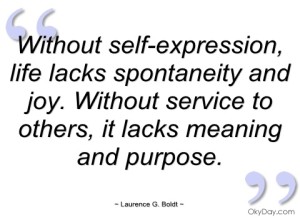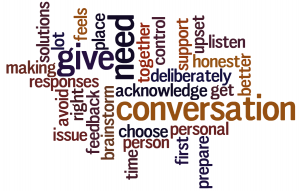5 keys to expressing yourself with more power and impact
 My daughter just turned seven. She is a joyful and easy-going child most of the time, but she is also at the age when children like to push boundaries and see what they can get away with. While she tries to exert her independence, her communications style often regresses to that of a toddler. She may cross her arms, stomp her feet and give me this defiant look that says, “I won’t have any of it” or “Who cares?” – which is one of her current favorite expressions. We are looking for new ways to express ourselves with power, but without tantrums. This includes using “strong language” instead of dramatic poses and whining whenever she makes a request or wants someone to stop doing something.
My daughter just turned seven. She is a joyful and easy-going child most of the time, but she is also at the age when children like to push boundaries and see what they can get away with. While she tries to exert her independence, her communications style often regresses to that of a toddler. She may cross her arms, stomp her feet and give me this defiant look that says, “I won’t have any of it” or “Who cares?” – which is one of her current favorite expressions. We are looking for new ways to express ourselves with power, but without tantrums. This includes using “strong language” instead of dramatic poses and whining whenever she makes a request or wants someone to stop doing something.
As adults, we sometimes also communicate in ways that may give us a sense of power but that are not productive. Yelling, name-calling, creating emotional outbursts, slamming doors or moving and gesturing frantically would all be examples of such false sense of power and control. Here are five better ways to express yourself powerfully and persuasively without creating unnecessary conflicts or drama:
Video link: http://youtu.be/18PBzP0D1Cc
1. Spotlight the audience to magnify your message. When you make people feel important and worthy of your full attention, they reciprocate with more trust and cooperation. When you help them improve their social standing, their brains perceive it as a reward. When people hear their own name, their brains show a unique pattern of activation specific to their own name in relation to the names of others. This activation pattern is similar to the patterns reported when individuals make judgments about themselves and their personal qualities. Focus your message on your audience members, their needs, concerns and desires, and they will be more open and willing to connect to your ideas.
2. Watch and match the energy of your audience. Is your audience laid-back, uptight, highly energetic or sluggish? Meet them where they are. Once you match their level of energy initially, you can take them where you want them to go by gradually building up the energy in the room. Conversations have their own rhythms and flow. They may slow down or speed up, intensify or linger. Since the energy in the room will fluctuate, you shouldn’t stay on the same level throughout the whole time. In addition, when people like one another their body language has a natural tendency to synchronize. It helps to build rapport. Subtle mimicry makes a good impression because it increases what’s called “sensorimotor fluency.” If you naturally sync with the audience, it will take less effort for their brains to process what you say.
3. Co-create your message with the audience. Your message will have more relevance and impact if you let your audience participate in developing your story and your ideas. Autonomy is a reward to the brain. We want to feel a sense of control and agency over our decisions. We want to have choices, to be able to predict the outcomes, and adjust our actions accordingly. Studies show that leaders who have more responsibilities and heavier workloads actually report less anxiety and stress than non-leaders. This is likely because leaders have a heightened sense of control. We are more likely to succeed implementing solutions that we have come up with than following someone else’s advice. To increase the autonomy and engagement of your audience, ask questions and listen actively. Invite people to share their own stories and experiences and encourage them to identify their own steps to reach the desired outcomes. Be a facilitator of insights, not a guru.
4. Make room for silence. Artists use the concept of “white space” to refer to the absence, or nothingness, that makes the content stand out. White space creates balance. Silence is the white space of a conversation. It allows insights to percolate to the surface. Pauses and silence create space for reflection. Don’t spin people’s brains into a frenzy. Turn down the inflow of information to enable new connections to form. Powerful, thought-provoking, open-ended questions encourage such silent reflection.
5. Use constraints to encourage action. Constraints and obstacles can be a good thing when you need to generate creative solutions. The brain likes to conserve energy and resources and prefers the status-quo over change because change requires more mental effort and conscious awareness. According to studies, constraints can force us to adopt a more global, “big picture” view of things, consider a greater range of possibilities, and better integrate unrelated pieces of information. A set of rules, templates, and requirements can boost creative thinking. Another strategy to shift the brain into action is to convey a sense of urgency by setting deadlines or to use scarcity by highlighting the limited availability of something. The brain does not want to miss out on good things that bear the stamp of approval. In a consumer preference experiment, Stephen Worchel and colleagues offered subjects chocolate chip cookies in a jar and asked them to taste the cookies and rate their quality. One jar had ten cookies in it, and the other jar had just two. Subjects preferred the cookies from the jar of only two cookies, even though they were the same cookies. Seeing the cookies disappear as a result of built-up demand make them more desirable and delicious. Thus, scarcity can be a mental shortcut for quality and a powerful motivator.

